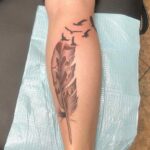Table of Contents
This has been an age-old debate, the answer to which, much like our tattoos, is not simply black and white. It’s a patchwork of fact, fiction, perception, and personal experience. Now, who’s better to unravel this enigma than your favorite needle wizard? Stick with me, folks; we’re about to explore the depths of the ink well, from the hues of pain to the grit of the needle.
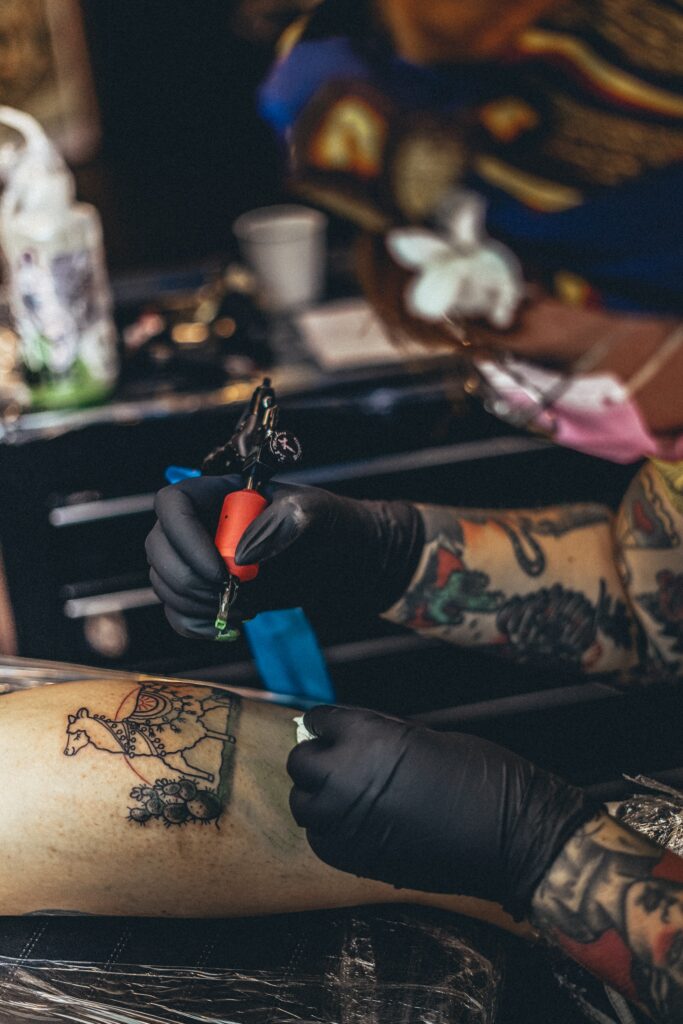
While a dash of humor might help ease your tattoo-related fears, don’t worry, I assure you, we’re not going to let that color our scientific insights. From an analysis of the pigmentation process to the impact of various colors on the dermal layers, we’ll leave no stone unturned. I’ll be injecting some personal anecdotes and client experiences into the mix, ensuring a holistic perspective on this intriguing topic.
Brace yourselves for an electrifying journey that will arm you with the knowledge you need to make your next tattoo decision with confidence. Who knows, we might even give you a splash of color inspiration along the way! So, let’s hop on the ink train and delve into this chromatic conundrum, because, as we all know, in the world of tattoos, knowledge isn’t just power – it’s art.
Why Do Tattoos Hurt?
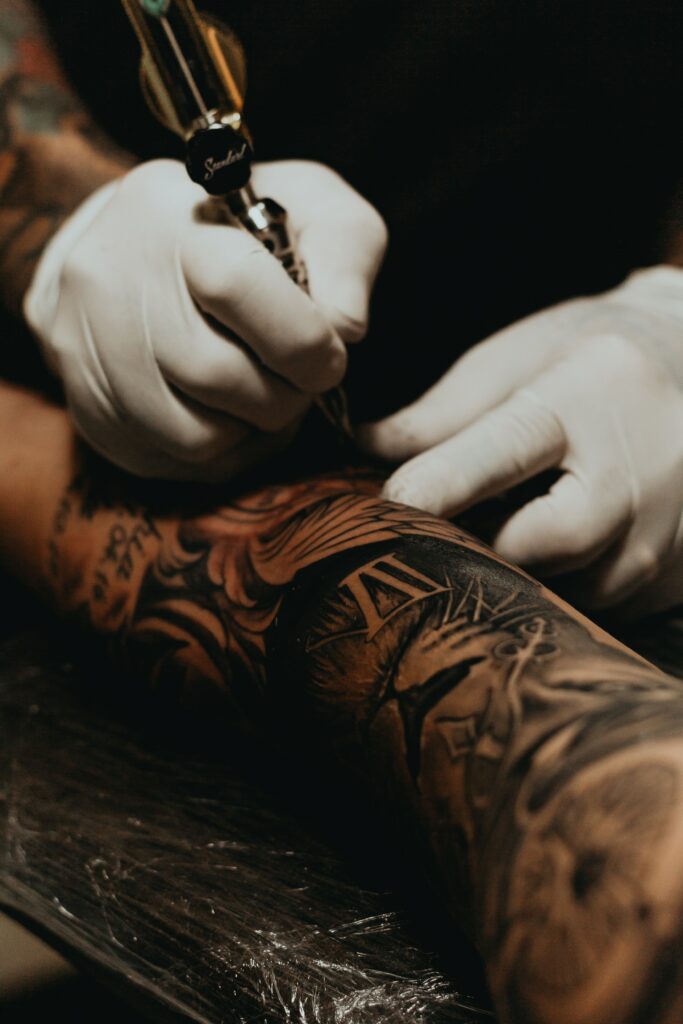
Imagine your skin as a pristine canvas. A tattoo is, quite simply, a vibrant story etched onto this canvas. But how does this happen? The answer is our beloved tattoo needle, a precise tool designed to inject ink into the dermis layer of your skin.
Picture this: A gentle drizzle feels soothing, but a hailstorm? Not so much. Similarly, a single prick of a tattoo needle is just a minor sting, akin to an immunization shot. But a full-blown tattoo session? That’s where the game changes.
I remember one of my first clients, a rugged biker guy with tattoos already adorning his arms. He walked in confidently, asking for a chest piece. He bore the first pass of the tattoo (the outline) like a champ, but as we started filling it in, I saw beads of sweat popping up on his forehead.
Your body instinctively reacts to the repetitive ‘mini stabbings’, triggering your immune system into overdrive. As your skin inflames and blood floods the tattooed area, you also get a rush of adrenaline which can be your savior or your downfall. It all depends on your individual pain tolerance and the specific area being tattooed. Remember, pain is subjective and varies wildly between individuals.
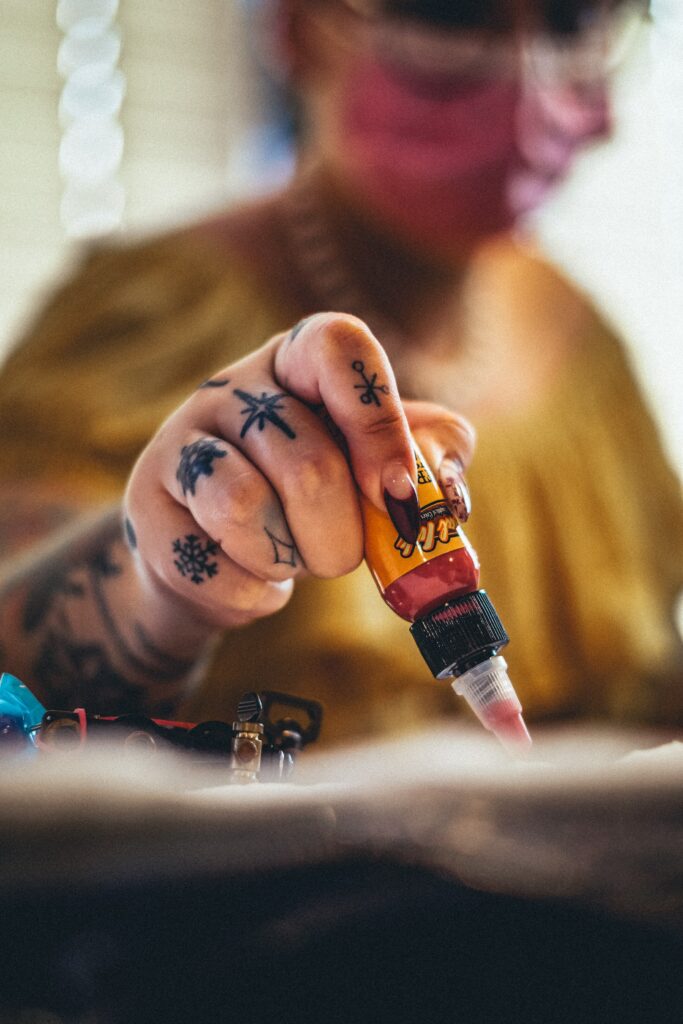
How The Type Of Tattoo Needle Affects Pain
Now, if you think a tattoo needle is just like the one from your sewing kit, you’re in for a surprise! A walk through a tattoo supply store would leave you astounded. We have an array of needle sizes, ranging from 0.25mm (eight gauge) to 0.40mm (14 gauge), and different grouping styles – each designed for specific aspects of the tattoo process.
- Needle Sizes: Small needles are excellent for intricate detailing, while larger ones are preferred for bold lines and covering larger areas.
- Needle Groupings: A collection of needles shaped in specific ways for different tattoo requirements.
Take, for instance, an eight gauge 03 Round Line – a grouping of three, eight-gauge needles in the round liner style. It’s less painful compared to a more aggressive grouping style of 15 thicker needles. However, it also delivers less ink, making it unsuitable for shading. More ink requires wider groupings, leading to more discomfort. This explains why some people might feel more pain with specific colors – it’s all about the amount of ink and needle configuration.
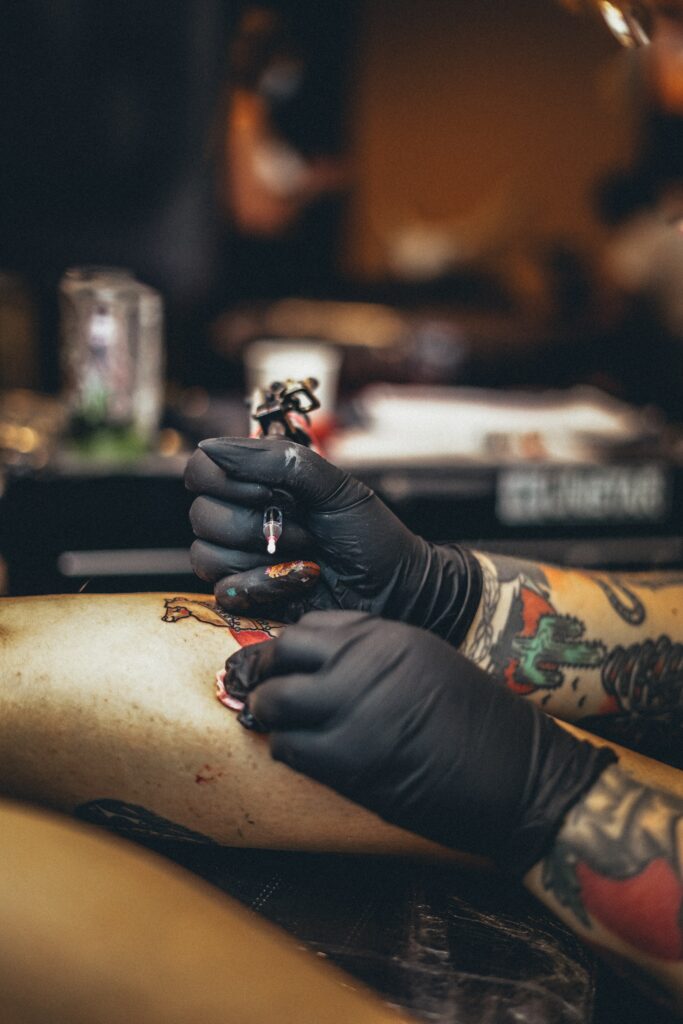
Color Ink Vs. Black Ink: Pain Differences
So, does color ink hurt more than black or grey? Here’s a splash of truth – the ink color doesn’t impact the pain directly. It’s the amount of ink required to achieve a particular color depth that makes the difference. Darker inks need less color packing, while lighter colors necessitate more passes for proper pigmentation, leading to more discomfort.
How Skin Color Can Affect Tattoo Pain
Skin color can also play a role in your tattoo pain experience. Darker skin tones may require more passes of tattoo ink, especially for colors like white or yellow, due to higher melanin content. It’s crucial to discuss this with your tattoo artist to prevent potential scarring damage from overworking the skin with ink.
In one of my memorable sessions, I tattooed a vibrant sunflower on a client with a darker skin tone. We had to make multiple passes to ensure the yellow stood out beautifully against her skin. She was a trooper through it all!
Ultimately, pain is part of the tattoo journey, a unique testament to the story you’re choosing to wear on your skin. Know your pain threshold and ensure your artist is skilled and knowledgeable. After all, a tattoo is not just an aesthetic choice, it’s an experience – colorful or otherwise.

Top Tips For Managing The Pain
Navigating the world of tattoo pain can indeed be a daunting task. However, with the right strategies in place, you can significantly improve your experience. Here are some tried-and-true tips to help you manage tattoo pain:
- Preparation is key: The night before your session, make sure to get a good night’s sleep and eat a solid meal before you go in. Being well-rested and nourished can make a huge difference in managing pain.
- Stay Hydrated: Drink plenty of water before and during your tattoo session. Dehydrated skin can exacerbate the pain and potentially prolong the healing process.
- Avoid Alcohol and Caffeine: Both alcohol and caffeine can thin your blood, leading to excessive bleeding during your session. This can make it harder for your artist to work and can potentially increase your discomfort.
- Practice Deep Breathing: Deep breathing or other relaxation techniques can help distract you from the pain. Focus on your breath, try to stay calm, and remember, the pain is temporary.
- Choose Your Tattoo Placement Wisely: Some parts of the body are more sensitive than others. The skin over bony areas or places with a lot of nerve endings can be particularly painful. If you’re concerned about pain, you might want to avoid these areas for your first tattoo.
- Use a Numbing Cream: There are several over-the-counter numbing creams that you can apply before your tattoo session. However, make sure to discuss this with your tattoo artist before using it, as it may not be suitable for all types of tattoos.
- Take Breaks: If the pain is getting too intense, don’t be shy about asking your artist for a short break. Just remember not to move while the needle is in your skin.
- Aftercare: Following your artist’s aftercare instructions can help alleviate pain and discomfort post-session and speed up the healing process.
Remember, everyone’s pain tolerance is different, and what works for one person may not work for another. It’s all about finding what’s best for you and preparing yourself mentally and physically for the experience.
Conclusion
And there you have it, my friends – an unfiltered, comprehensive scoop on the colorful world of tattoo pain. Remember, tattooing, in essence, is a form of controlled trauma, so experiencing some level of discomfort is par for the course. It’s all about your individual pain threshold, the type of needles used, and the volume of ink required, not necessarily the color of the ink itself.
Stay informed about the process – the needles used, their arrangement, and the techniques employed. Listen to your body and ensure your artist understands your pain tolerance level. Make sure to have a detailed discussion with your artist, especially if you have darker skin tones, to prevent potential scarring from overworking the skin.
The secret to a successful tattoo session lies in being prepared and knowledgeable. Understand that every tattoo journey is unique and pain, though a part of it, doesn’t define it. Embrace it as a testament to the story you’re etching on your skin. At the end of the day, it’s all about taking that bold step towards self-expression. So, armed with your newfound insights, step out and let your vibrant stories find their permanent place on your canvas. After all, every prick is worth the masterpiece it creates!


